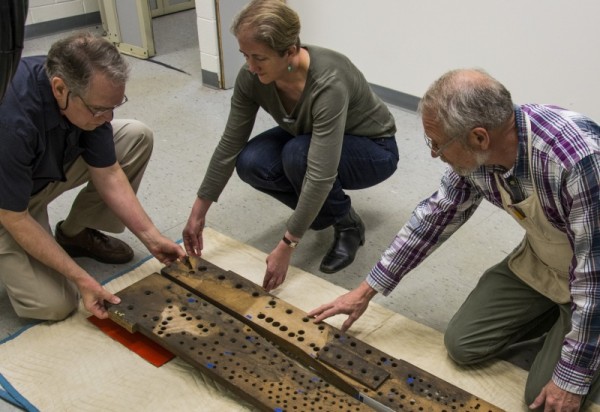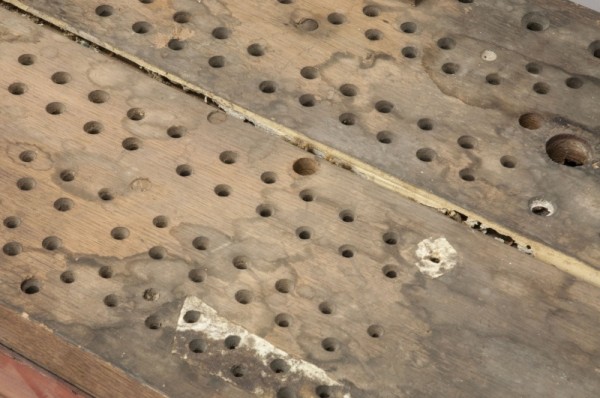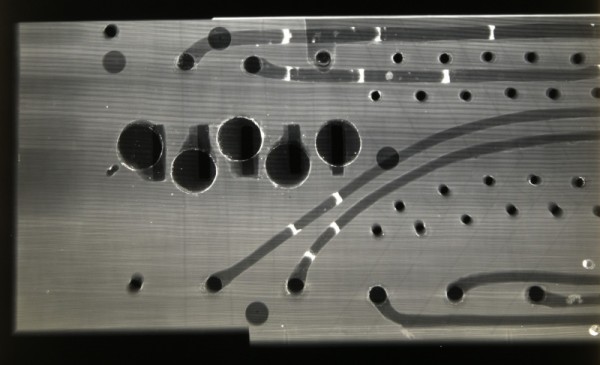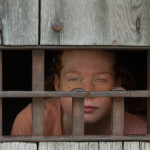A toe board looks like a solid board with slightly funnel-shaped holes for the pipes (see wind-chest diagram), but the boards are anything but solid.
Inside the toe board are many hidden channels running laterally to direct wind to the pipes, especially the larger pipes that have to be placed wherever they fit in the case.

Lou (right) and John lift the toe boards while Emily Williams, archaeological conservator serving as radiologist, positions the x-ray film.
Pumping air into each hole to see where the wind comes out is the only way to find which hole on the top of the toe board comes from which hole on the bottom.
That is how we found several anomalies. A couple of passages led to more than one pipe and a couple of others seemed to lead nowhere. Both of these indicate problems somewhere inside the toe boards.
It was time for some radiography (x-rays).
The x-ray revealed a surprising array of hidden wind passages — and answers to all our questions.
But it also revealed a new mystery.
What were those white features that appeared to block several passages in one of the toe boards? These partitions would have stopped the flow of air and created a series of hidden chambers.
Using a fiberscope to virtually crawl into the passages, we found the mud partitions creating the chambers. Most of the mud walls were partially broken out. We also found the skeletal remains of one of the culprits.
There are several varieties of wasp that form their nests with mud, earning them the nickname “mud dauber.” Ironically, our chamber builders were not of the species of this insect widely known the “organ pipe mud dauber,” so named because it builds tubes (“pipes”) of mud for their nests.
Instead, the ones that colonized our toe board were an opportunistic variety that took advantage of the already-formed and perfectly sized tubes of the toe board to simply partition off their nesting chambers.
The mud daubers had long ago abandoned their toe board apartments. We used the fiberscope as a battering ram to demolish their mud walls. The toe boards are almost ready to re-install in the wind-chest.
[soliloquy id=”17254″]
Conservation of the Tucker organized piano is made possible by a gift in memory of N. Beverley Tucker, Jr.



Amy Stearns says
This is another fascinating update on the organized-piano project — once again you have something amazing and unexpected to share. Thank you so much for continuing to produce these periodic reports, which I look forward to every month.